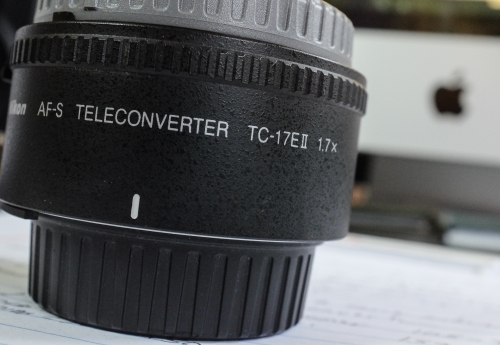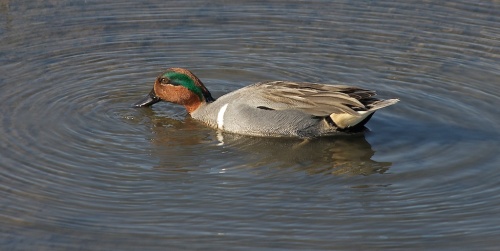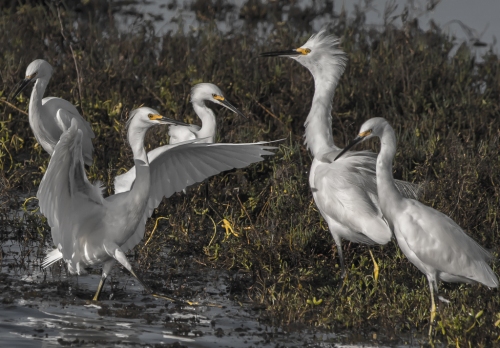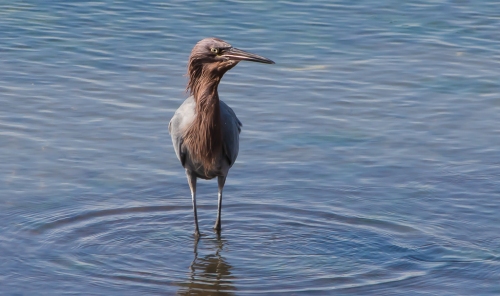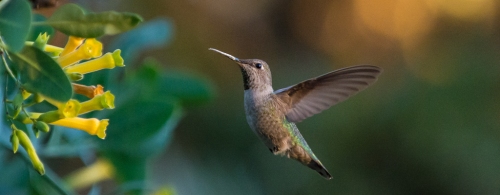My current bird rig is a Nikon D7100, a Nikon 70-200 f/2.8, and a Nikon TC17eII teleconverter.
My love/hate relationship with the teleconverter may help other bird enthusiasts decide whether to invest in long lenses or take a component approach, as I have.
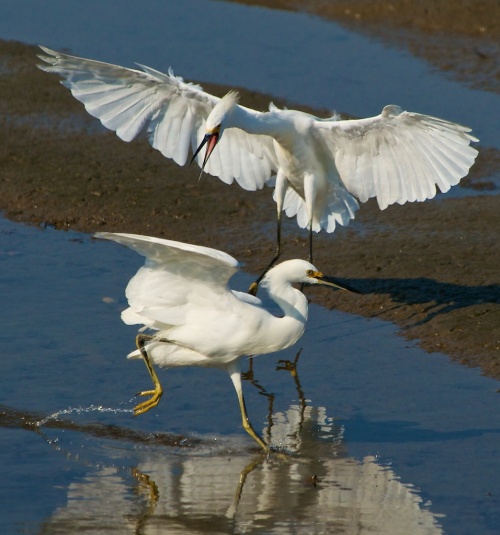
Nikon D7000; Nikon 70-200 f/2.8; Nikon TC17eII
When I bought the teleconverter in September of 2011, I shared my excitement in several blog posts. I got a good deal ($300) on the refurbished teleconverter, and if we judge the investment by hours in use, it has been a great value. I’ve shot many thousands of images with it.
But what if we judge by image quality?
Why do you ask such difficult questions? First let’s look at the pros and cons of a teleconverter:
Pros: Extra “reach” for minimal cost and weight. On a full frame dslr like my D610, the 1.7x teleconverter turns my 70-200 f/2.8 into a 119-340 f/4.5. On a crop sensor dslr like my D7100, the 70-200 becomes a 178.5-510 f/4.8. A 500mm f/4.8 is a fine thing, is it not? And may I point out the optics and recording systems are far superior to what I could afford in my film days.
Cons: light loss, reduced image “quality,” potential focus misalignment, diminished bokeh quality, and an irresistible invitation to hand-hold focal lengths that probably should not be hand-held.
That’s a lot of cons, but note that only light loss is an easily quantifiable factor. I know the teleconverter affects image quality, but I don’t know precisely how or how much. In fact, much of the hate in my love/hate relationship with the device was seeded by this article.
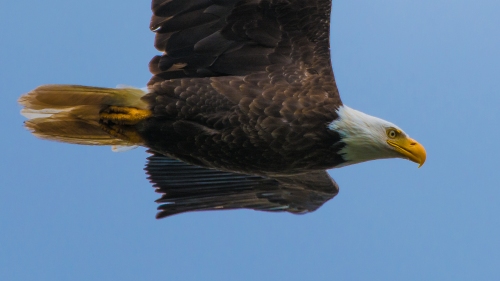
The most important prerequisite for photographing an eagle is to get yourself to where the eagles are.
Them Hogan has poisoned my mind with the truth: The teleconverter ALWAYS degrades quality, literally. For a long time, I reveled in excuses to justify enjoying the TC17 – “Hey, that’s a pretty good shot for <low light><handheld><low cost><low resolution crop>etc.” When I use it, I know that I’m not getting maximum quality.
Thinking about Thom’s article drives me to pixel-peeping, where one can ALWAYS find problems. Yet when my images fail to meet expectations for technical quality, I cannot blame the teleconverter.
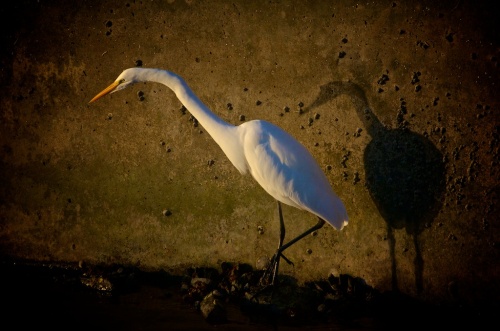
An 18×24 print of this image hangs over our fireplace, and no one yet has asked whether I used a teleconverter.
Some of my favorite images were produced with this teleconverter, so there’s more to making a bird photograph than maximum optical data retrieval…
When building a camera system, the technical trade-offs and compromise conundrums are an impossible equation with too many variables. Those of us who cannot afford maximum data integrity (and the $12,000 lenses that get us closer to it) must decide whether our particular compromise is good enough. Defining “good enough” could drive one mad. I say stop thinking about the gear and start looking at the images.
Many of my images with the TC 17eII suck, but the fact that some of my favorite images were captured using the TC 17 reassures me that it is capable of much more than I usually ask of it. Until I maximize focus fine-tune adjustments on the camera, use a tripod (as befits a 510mm lens), and demonstrate the attention to composition, lighting, and moment that marks my best work, I cannot condemn the teleconverter. Moreover, I could invest in the $12,000 lens and get similar results through poor shot discipline.
Fortunately, I don’t have to agonize over whether to buy a fancy birding lens. I enjoy bird photography, but performance and event photography pay the bills, so gear that suits those purposes must be my highest priority. Owning a teleconverter lets me enjoy bird photography on the side without over-extending my credit limit or compromising the gear I need to do my job. In fact, I’ve even pressed the TC17 into service for performance:
The quest for ever-longer lenses turns into a dead-end for many bird photographers, especially hobbyists. However much we spend, the long lenses are never long enough and they introduce all sorts of new complexities to an already challenging endeavor (heat shimmer, compression, weight, closer-than-expected subjects). Some of my favorite bird images were shot with a 105mm f/2.8 macro that I was carrying to photograph butterflies, proving to me that “reach” is not the be-all and end-all of bird photography:
So I guess the TC17eII is the right tool for MY bird photography excursions at this time, offering versatility and – for the moment – acceptable image quality.
Recently I reorganized my gear storage and prepared a “grab-and-go” bag for maximum versatility in minimal package for a sudden assignment or unexpected travel. Two cameras (D610 and D7100), two lenses (24-70 f/2.8 and 70-200 f/2.8), two SB600 flashes, and, wait for it: The TC17eII teleconverter. That’s a lot of focal lengths in a small backpack.
Besides, if teleconverters are good enough for the nature photography of Moose Peterson, they’re good enough for me.

